How to Start a Vegetable Garden
- January 11, 2024
- 0 comment
In a world questioning food supply reliability, cultivating your own vegetable garden emerges as a practical and rewarding solution, offering benefits beyond immediate food security. As supermarket shelves sometimes go bare, the allure of homegrown produce becomes evident. This guide unveils the art of starting a vegetable garden, encouraging exploration of soil and the numerous advantages that accompany nurturing your crops.
From reducing environmental impact to fostering physical and mental well-being, this journey into home gardening extends beyond mere sustenance. Let’s delve into the fertile ground of knowledge to unearth secrets for a thriving, sustainable vegetable garden a source not just of fresh produce but also health, satisfaction, and a connection with nature’s cycles.
List of Guides on How to Start a Vegetable Garden
- Research and Embrace Permaculture Principles
- Develop a Comprehensive Gardening Plan
- Choose a Sunlit Location
- Assess Soil Inclination and Water Sources
- Obtain Seeds and Tools
- Prepare and Nurture the Soil
- Sow Seeds According to Guidelines
- Establish a Watering Routine
- Monitor and Be Patient During Growth
- Harvest Your Garden’s Bounty
1. Research and Embrace Permaculture Principles
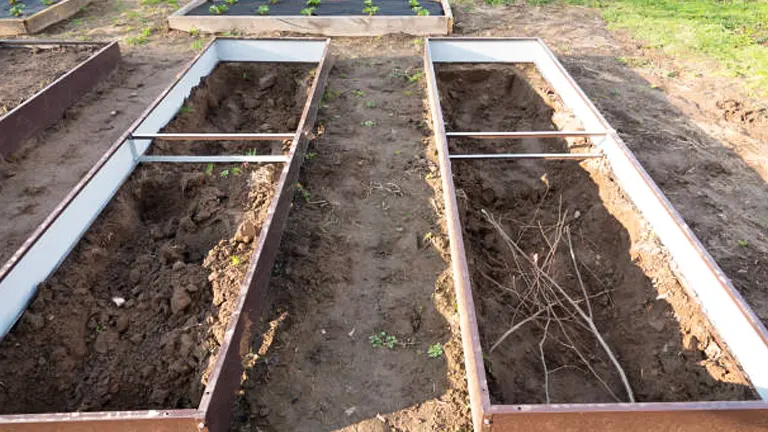
Before diving into gardening, familiarize yourself with permaculture principles a sustainable farming approach inspired by nature’s balance, emphasizing resilient ecosystems. It’s more than just observing and organizing; think about strategies like companion planting for biodiversity. Use water-harvesting methods like rain barrels for efficient water use. Incorporating perennial plants and trees turns your garden into a self-sufficient ecosystem. Explore no-dig gardening to keep the soil healthy. In essence, permaculture provides a holistic framework that nurtures your garden and benefits the environment.
Additional Tips:
- Composting Wisdom: Embrace composting to recycle kitchen and garden waste, enriching the soil naturally.
- Attract Beneficial Insects: Foster a habitat for beneficial insects such as ladybugs and bees, promoting natural pest control.
- Implement Zone Planning: Utilize zone planning to organize your garden based on the frequency of human interaction, optimizing energy and resource efficiency.
- Diversify Plant Species: Foster plant diversity to create a resilient and thriving ecosystem that is less prone to diseases and pests.
- Mulch for Soil Protection: Apply organic mulch to conserve soil moisture, suppress weeds, and protect the soil structure.
2. Develop a Comprehensive Gardening Plan
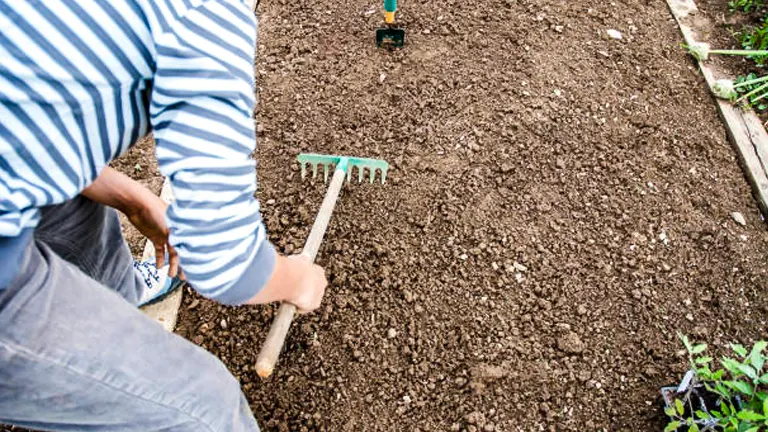
Start your gardening adventure by connecting with local gardening experts in your community. Learn about your climate, discover the best times to plant and harvest, and gather practical insights on what grows well in your area. Benefit from the knowledge of experienced gardeners, getting tips that go beyond what you find in books. Have conversations to identify plant varieties suited for your region, determine the right quantity based on your goals, and understand the seasonal considerations for both warm and cold weather. Use this information to create a straightforward gardening calendar, strategically planting early and late-season crops. This careful planning not only optimizes space but also reduces weed growth, setting the stage for a successful and sustainable gardening experience.
Additional Tips:
- Soil Testing for Nutrient Levels: Conduct soil tests to assess nutrient levels, guiding your choice of crops and necessary soil amendments.
- Companion Planting Strategies: Embrace companion planting to enhance plant health, repel pests, and encourage mutually beneficial relationships between different species.
- Succession Planting for Continuous Harvest: Implement succession planting to ensure a steady supply of fresh produce throughout the growing season.
- Consider Vertical Gardening: Explore vertical gardening techniques to make the most of limited space, especially in urban settings.
- Integrate Perennial Crops: Include perennial crops in your plan for long-term productivity, requiring less annual replanting.
3. Choose a Sunlit Location
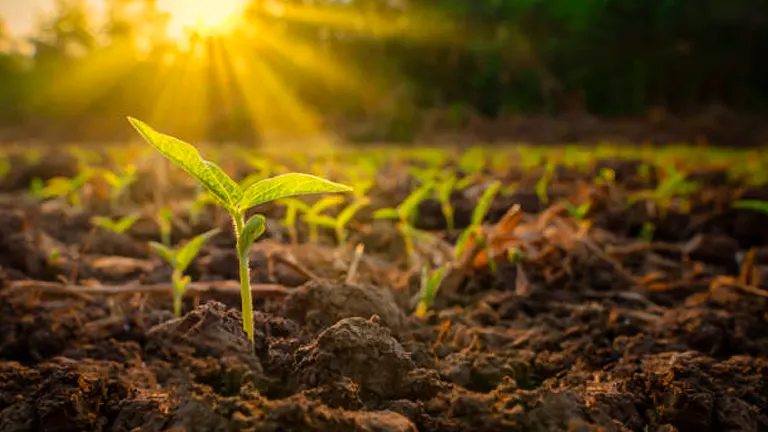
When picking a spot for your veggie garden, go for an area that gets 6 to 8 hours of sunlight daily. In hotter places, think about adding some shade to protect your plants from too much sun. If you’re planning to grow veggies indoors, find the warmer and brighter areas in your house. You can even use a small greenhouse for growing simple herbs. Making sure your garden gets enough sunlight, whether it’s outside or inside, is crucial for healthy and thriving plants.
Additional Tips:
- Understand Sun Patterns: Observe the sun patterns in your chosen location throughout the day to ensure consistent sunlight exposure.
- Rotate Container Plants: If growing in containers, periodically rotate them to ensure all sides of the plants receive ample sunlight.
- Consider Reflective Surfaces: Utilize reflective surfaces or materials near your garden to maximize sunlight reflection onto plants.
- Invest in Grow Lights: For indoor gardening, invest in quality grow lights to supplement natural sunlight and promote healthy plant growth.
- Monitor Soil Temperature: Be mindful of soil temperature, as adequate sunlight not only influences plant growth but also helps maintain optimal soil conditions.
4. Assess Soil Inclination and Water Sources
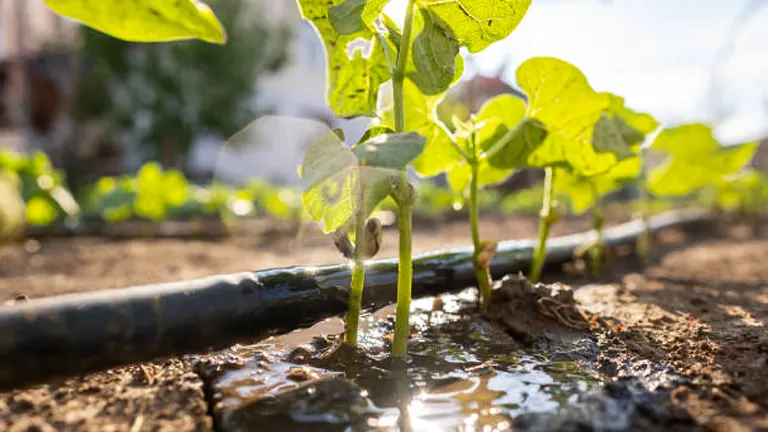
Place your garden near a water source for convenient watering, ensuring a steady supply for your plants. Check the slope of the land to steer clear of problems like waterlogging at the bottom or too-quick drying at the top. It’s all about finding that sweet spot to keep your soil just right. A handy tip: if you’re in a dry area, think about using a water hose to reach a bit further. For those looking to step up their game, consider installing an automatic irrigation system or saving rainwater in containers for those dry spells. By thinking about your garden’s location in terms of water, you’re not just setting up plants; you’re setting up a balanced and thriving ecosystem.
Additional Tips:
- Mulching for Water Retention: Apply organic mulch around plants to conserve soil moisture, reduce evaporation, and suppress weed growth.
- Use Drip Irrigation: Opt for drip irrigation systems to deliver water directly to the plant roots, minimizing water wastage.
- Implement Raised Beds: For areas with poor drainage, create raised beds to prevent waterlogging and enhance soil aeration.
- Regularly Monitor Soil Moisture: Employ soil moisture sensors to monitor hydration levels and adjust your watering routine accordingly.
- Introduce Compost to Improve Soil Structure: Enhance soil structure and water retention by incorporating compost into the soil.
5. Obtain Seeds and Tools
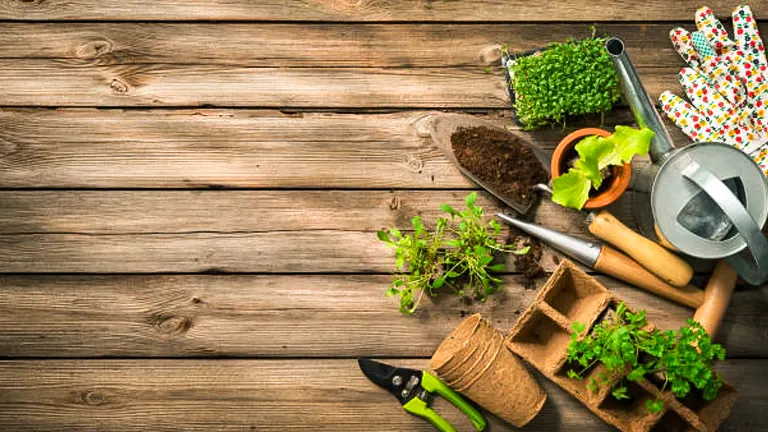
Secure your seeds and tools by ordering from trusted retailers or exploring local cooperatives for speedy deliveries. Connecting with locals not only expedites the process but also provides valuable insights into the best crops and gardening practices tailored to your specific region.
Whether you choose the convenience of large online retailers or opt for a more local touch, starting with basic essentials is key. Grab a pair of gloves and essential tools like a rake, spading fork, or wheelbarrow (especially if you need to clear some grass), all readily available at the same store.
Consider reaching out to local cooperatives or even neighbors – in these times, a call might work just as well. Beyond potentially faster deliveries, tapping into local knowledge can be a goldmine. They might not sell the tools, but you might score a lend. Plus, it’s an excellent chance to gather firsthand insights on what grows best in your area.
Additional Tips:
- Explore Seed Varieties: Experiment with different seed varieties to add diversity to your garden. You might discover unique or hardy plants that thrive in your specific conditions.
- Check Local Planting Calendars: Look into local planting calendars for specific guidance on when to sow and harvest in your region. This ensures you’re in sync with the optimal growing seasons.
- Consider Container Gardening: If space is limited, explore container gardening. Many vegetables can be grown in pots or containers on balconies or small patios.
- Reuse and Recycle Containers: Before investing in new containers, consider reusing and recycling items like buckets, old pots, or wooden crates. It’s a sustainable and cost-effective way to start your garden.
- Start Small: Especially if you’re new to gardening, consider starting small. A manageable garden allows you to learn and build confidence gradually.
6. Prepare and Nurture the Soil
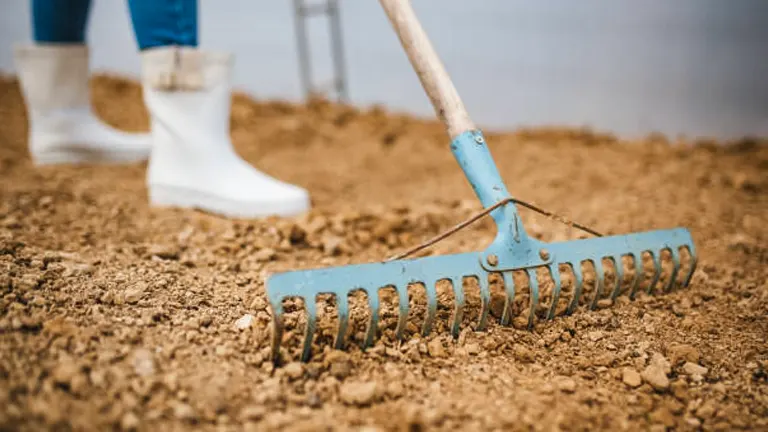
Prepare the soil thoroughly to create optimal conditions for robust plant growth. Commence by removing weeds and effectively tilling the soil. Enhance its fertility by incorporating organic materials such as garden compost or nutrient-rich worm humus fertilizer. This meticulous preparation establishes a nourishing environment, ensuring the vigorous and flavorful growth of your fruits and vegetables.
Choose soft, loamy, and sandy soil for an environment conducive to the expansive growth of plant roots. Once you’ve determined the size of your vegetable garden targeting approximately 200 square feet (or 1.9 square meters) per person annually eliminate undesirable weeds, perform soil tillage, and enrich it with organic amendments like garden compost or worm humus fertilizer. This not only provides essential nutrients to the soil but also creates ideal conditions for your seeds to develop into larger and more flavorful fruits and vegetables.
Additional Tips:
- Test Your Soil: Consider getting a soil test to understand its pH and nutrient levels. This information helps you tailor your soil amendments for the specific needs of your plants.
- Mulch for Moisture Retention: Apply a layer of organic mulch around plants to retain moisture, suppress weeds, and regulate soil temperature. It’s like a protective blanket for your garden.
- Companion Planting for Soil Health: Explore companion planting to naturally enhance soil health. Certain plants work together to repel pests, attract beneficial insects, and improve overall soil conditions.
- Rotate Crops: Implement crop rotation to prevent soil-borne diseases and pests. Changing the planting locations each season helps maintain soil health and fertility.
- Consider Cover Crops: During periods of non-production, consider planting cover crops. These plants protect the soil from erosion, add organic matter, and improve its structure.
7. Sow Seeds According to Guidelines
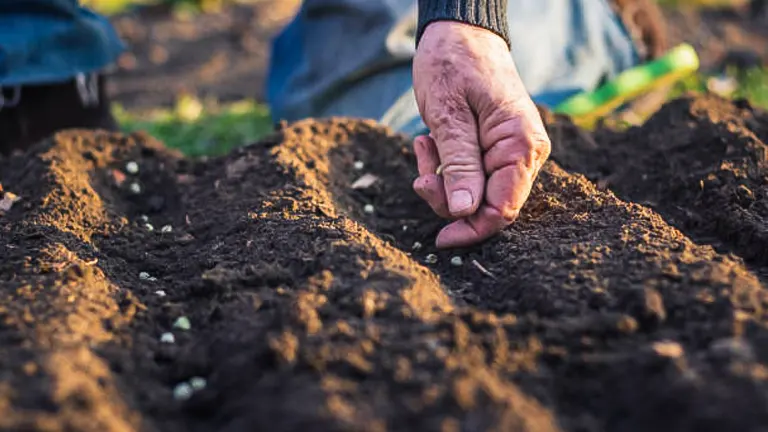
Achieve successful seed germination by aligning your planting with the local climate, sunlight exposure, and available irrigation. Seek guidance from seed packets or online resources for specific instructions on planting depth and timing, customizing your approach to suit the distinct needs of each crop. This adaptable approach establishes a solid foundation for a thriving and fruitful garden.
Consult your seed packets for vital details, including the optimal months for planting and harvesting your fruits and veggies. Additionally, adhere to guidelines on seed depth—typically, sprinkle smaller seeds on the soil surface, while larger seeds should be planted 2-5 centimeters deep. Whether you’re a novice or a seasoned gardener, paying attention to these details from seed packets or online sources ensures that your seeds kickstart their growth journey with precision.
Additional Tips:
- Use Seed Trays: Consider using seed trays for germination, especially for smaller seeds. This method provides a controlled environment for initial growth before transplanting.
- Pre-soak Large Seeds: For larger seeds with hard coats, pre-soak them overnight to soften the outer layer. This can encourage quicker germination.
- Label Your Plantings: Keep your garden organized by labeling your plantings. This avoids confusion and helps you track the progress of different crops.
- Consider Succession Planting: Explore succession planting to stagger harvest times. This ensures a continuous supply of fresh produce rather than a single overwhelming harvest.
- Opt for Heirloom Seeds: Choose heirloom seeds for certain crops to preserve traditional varieties. These seeds often have unique flavors and characteristics.
8. Establish a Watering Routine
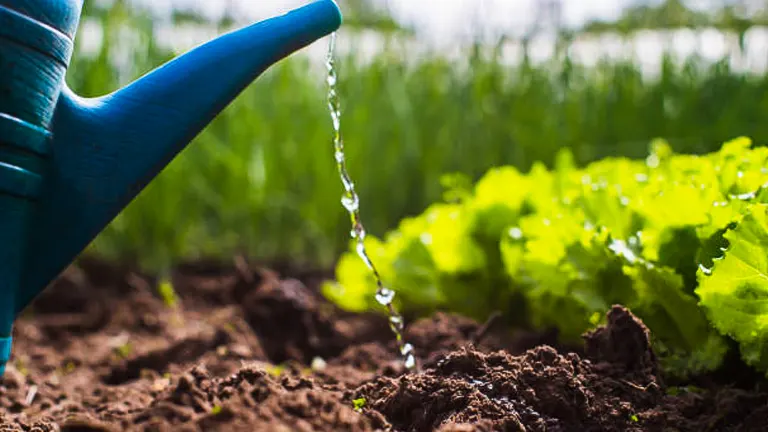
Maintain a watering routine for your vegetable garden, opting for once or twice a week instead of a daily regimen. This deliberate approach prompts deeper root growth as plants naturally extend their roots to find moisture, bolstering their overall resilience. Concurrently, diligently weed out unwanted intruders regularly to curb their reproduction and potential interference with your crops.
Additional Tips:
- Mulch for Moisture Retention: Apply a layer of organic mulch around your plants to lock in moisture, reducing the frequency of watering and creating a more consistent soil environment.
- Water in the Morning: If possible, water your garden in the morning. This allows the plants to absorb moisture before the heat of the day, reducing the risk of evaporation.
- Invest in Drip Irrigation: Explore drip irrigation systems for efficient and targeted watering. This method delivers water directly to the base of plants, minimizing water wastage and promoting root health.
- Learn Plant-Specific Watering Needs: Different plants have varied water requirements. Familiarize yourself with the specific needs of each crop in your garden to tailor your watering routine accordingly.
- Monitor Soil Moisture: Regularly check the soil moisture levels. Stick your finger into the soil to determine if it’s time for watering. Consistent monitoring ensures your plants receive the right amount of hydration.
9. Monitor and Be Patient During Growth

Facilitate your garden’s development through a steadfast routine of watering, weed removal, and frequent disease inspections. Understand that noticeable growth occurs gradually, with complex root structures maturing beneath the soil’s surface. Cultivate a patient approach, refraining from premature harvesting, to ensure your vegetables and fruits achieve their maximum flavor potential.
Additional Tips:
- Prune Wisely: Prune plants as needed to encourage healthy growth and shape. Be mindful not to over-prune, as this can stress the plants.
- Keep an Eye on Pests: Regularly inspect your plants for signs of pests. Early detection allows for prompt intervention, preventing potential damage to your crops.
- Rotate Crops Annually: Consider rotating crops annually to reduce the risk of soil-borne diseases and pests. Changing planting locations helps maintain soil health.
- Encourage Beneficial Insects: Attract beneficial insects to your garden, such as ladybugs and bees, to aid in pollination and natural pest control.
- Experiment with Companion Planting: Explore companion planting techniques to enhance the health and productivity of your garden. Certain plants thrive when grown in proximity to each other.
10. Harvest Your Garden’s Bounty
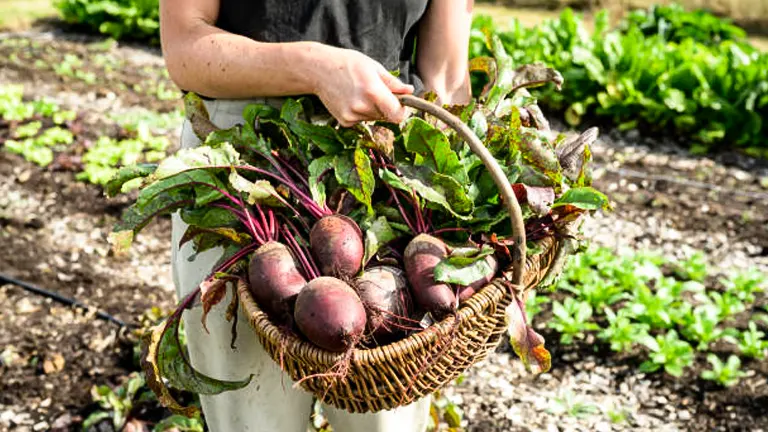
Finally, it’s time to enjoy the results of your hard work. Collect ripe fruits and vegetables using the right methods some might need scissors, while others can be gently hand-picked. For plants like basil that don’t come back each year, start planting again to keep the harvest going. This marks the successful end of your thriving vegetable garden.
Additional Tips:
- Mind Harvesting Timing: Time your harvest to coincide with the peak ripeness of each crop. This ensures optimal flavor and nutritional value.
- Choose the Right Tools: Select appropriate tools, like sharp scissors or pruning shears, for precise and damage-free harvesting.
- Early Morning Harvest: Opt for early morning harvesting when temperatures are mild. This practice not only maintains freshness but also minimizes stress on the plants.
- Proper Storage Techniques: Implement proper storage methods to prolong the freshness of your harvest. Different vegetables and fruits have specific storage requirements, so be mindful of these nuances.
- Succession Planting for Continuity: Engage in succession planting to ensure a continuous supply of fresh produce. This strategic approach involves planting new crops as others are harvested, maximizing your garden’s productivity.
By paying attention to the interplay of soil inclination and water accessibility, you’re not only nurturing plants but fostering an environment that encourages resilience and sustained vitality.
Benefits Of Starting To Grow a Vegetable Garden
- Food Security in Uncertain Times: Amid global uncertainties, cultivating a vegetable garden provides a sense of control over food sources. As concerns about food security arise, having a personal garden ensures a reliable supply of fresh produce, reducing dependence on external factors.
- Environmental Sustainability: Homegrown vegetables contribute to environmental sustainability by minimizing the carbon footprint associated with transporting food over long distances. By choosing local produce, you actively participate in reducing the environmental impact of the food industry.
- Eco-Friendly Cultivation Practices: Growing your vegetables allows you to adopt eco-friendly cultivation practices. Steering away from heavy pesticide use, you contribute to healthier ecosystems and reduce the negative environmental effects associated with conventional farming methods.
- Healthier Dietary Choices: The availability of fresh fruits and vegetables at your doorstep encourages a healthier diet. With easy access to nutrient-rich produce, you’re more likely to incorporate these elements into your daily meals, aligning with recommended dietary guidelines.
- Physical and Mental Well-Being: Gardening is not just about the end product; it’s also a therapeutic activity. Engaging in tasks like planting, weeding, and harvesting provides physical exercise, while the connection with nature fosters mental well-being, offering a welcomed respite from the challenges of daily life.
- Satisfaction of Self-Sufficiency: Witnessing the fruits of your labor – from seed to harvest – brings a unique sense of satisfaction and self-sufficiency. Knowing that you played a role in providing sustenance for yourself and your family adds a rewarding dimension to the gardening experience.
In essence, starting a vegetable garden encompasses a multitude of benefits, ranging from personal well-being and environmental consciousness to a more secure and sustainable approach to food provision.
Factors to Consider When Starting to Grow a Vegetable Garden
- Climate and Growing Zone: Understanding your local climate and growing zone is crucial for successful gardening. Different vegetables thrive in specific climates, so research the optimal conditions for your area. Consider factors like temperature ranges, frost dates, and the length of your growing season to choose suitable crops.
- Sunlight Exposure: The amount of sunlight your garden receives directly impacts plant growth. Most vegetables require at least 6 hours of sunlight daily. Analyze your outdoor space to identify sunny and shaded areas. This assessment helps determine the placement of different crops to ensure they receive the required sunlight.
- Soil Quality and Composition: Assessing your soil’s quality and composition is fundamental for plant health. Conduct a soil test to understand its pH, nutrient levels, and texture. Different vegetables prefer varying soil conditions, so amending your soil accordingly with organic matter ensures an ideal environment for plant growth.
- Water Availability and Irrigation: Access to water is vital for a thriving garden. Consider the proximity of your garden to a water source and whether you’ll need additional irrigation. Efficient watering practices, such as drip systems or soaker hoses, help maintain consistent soil moisture without water wastage.
- Space and Layout: Carefully plan the layout of your vegetable garden, considering available space and the spatial needs of different crops. Group plants with similar water and sunlight requirements together, optimizing space and making maintenance more manageable.
- Companion Planting and Crop Rotation: Embrace companion planting to enhance biodiversity and deter pests naturally. Research which plants complement each other and those that should be kept apart. Additionally, incorporate crop rotation to prevent soil-borne diseases and maintain soil fertility.
- Budget and Resources: Consider your budget and available resources when planning your garden. Factor in costs for seeds, soil amendments, tools, and potential fencing to protect against pests. Utilize local resources, such as community gardens or cooperatives, for cost-effective options.
- Time Commitment: Gardening requires time and consistent effort. Assess your schedule realistically and choose crops and practices that align with your availability. Starting small and gradually expanding allows you to manage your garden effectively without feeling overwhelmed.
- Pest Management Strategies: Develop a pest management plan to protect your crops. Research common pests in your region and implement preventive measures, such as companion planting or natural predators. Stay vigilant and address pest issues promptly to minimize damage.
- Knowledge and Continuous Learning: Stay informed and continuously expand your gardening knowledge. Join local gardening clubs, attend workshops, and leverage online resources. Keeping up with best practices and new techniques enhances your ability to troubleshoot issues and foster a thriving garden.
Considering these factors provides a comprehensive foundation for a successful vegetable garden, ensuring you make informed decisions tailored to your specific environment and goals.
Conclusion
Starting a vegetable garden is more than planting seeds; it’s a journey towards sustainability and self-sufficiency. From permaculture principles to sunlit locations and nurturing seeds, each step deepens our connection to nature. The benefits extend beyond fresh produce—offering food security, reduced environmental impact, and a therapeutic communion with life cycles. Harvesting becomes a celebration of a green lifestyle, promoting well-being, connection, and a sustainable future. In essence, starting a vegetable garden is a simple yet powerful journey of cultivating plants and a harmonious way of living.
FAQs
- How much space do I need for a vegetable garden?
The space required depends on your goals. A beginner can start with a small plot or containers, while those aiming for more variety should consider about 100-200 square feet per person. - Can I start a vegetable garden without prior gardening experience?
Absolutely! Start with easy-to-grow vegetables like tomatoes, lettuce, or herbs. As you gain experience, you can expand and experiment with different crops. - What’s the best time to plant vegetables?
Timing varies by region, but generally, plant cool-season crops in early spring and warm-season crops after the last frost. Consult local gardening resources for precise recommendations. - How do I deal with pests in my vegetable garden?
Introduce natural predators like ladybugs, use companion planting techniques, and consider organic pest control methods such as neem oil or diatomaceous earth. - Can I start a vegetable garden indoors?
Yes, you can! Use containers near sunny windows or invest in grow lights. This is perfect for herbs, small veggies, and getting a head start on the growing season. - What’s the importance of crop rotation in a vegetable garden?
Crop rotation prevents soil-borne diseases, improves soil fertility, and helps manage pests. Rotate crops annually to optimize yields and maintain soil health. - How often should I water my vegetable garden?
Water deeply once or twice a week, allowing the soil to dry between watering. Adjust frequency based on weather conditions and the specific needs of your plants. - Is composting necessary for a vegetable garden?
Yes, composting enriches the soil with nutrients, improves its structure, and encourages beneficial microorganisms. It’s an eco-friendly way to enhance your garden’s health and productivity.
Starting a vegetable garden brings nature’s bounty to your home. With basics like permaculture principles, sunlight, water, and local tips, your garden becomes a source of joy and fresh produce. Happy gardening!

Benjamin Brooks
Forestry AuthorGreetings! I'm Benjamin Brooks, and my journey over the past 15 years has revolved around the fascinating realms of content creation, expertise in snow clearing, and the intricate world of lumberjacking and landscaping. What began as a simple curiosity about the natural world and heavy machinery has evolved into a passionate profession where my love for crafting words intertwines seamlessly with my lumberjacking and garden skills.


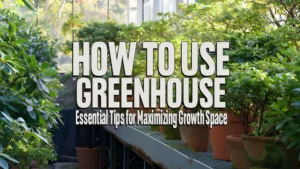
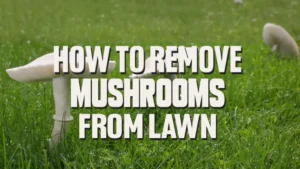

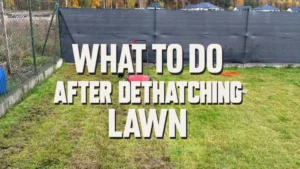

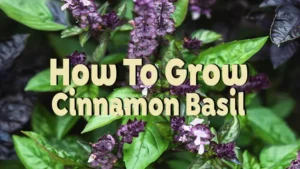



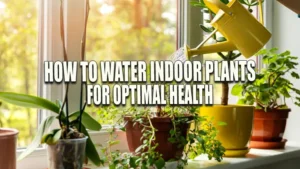

Leave your comment